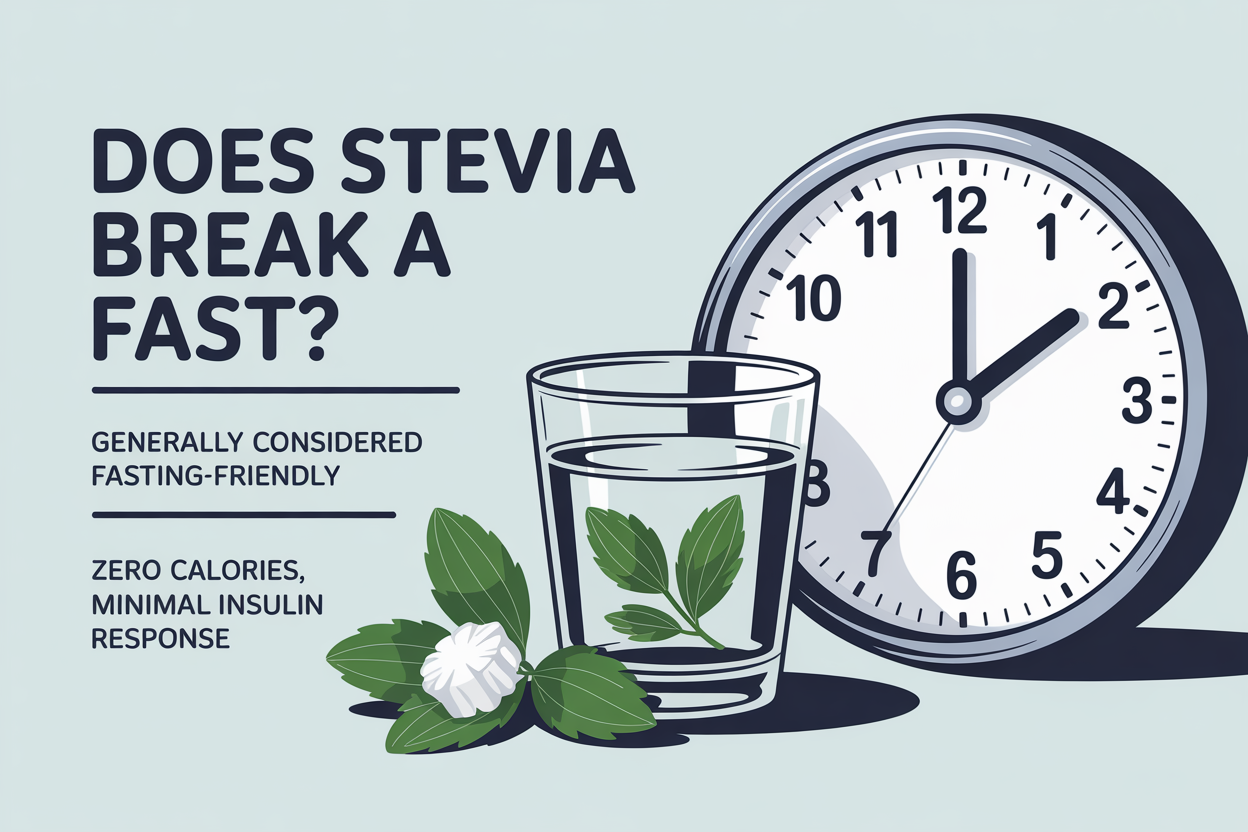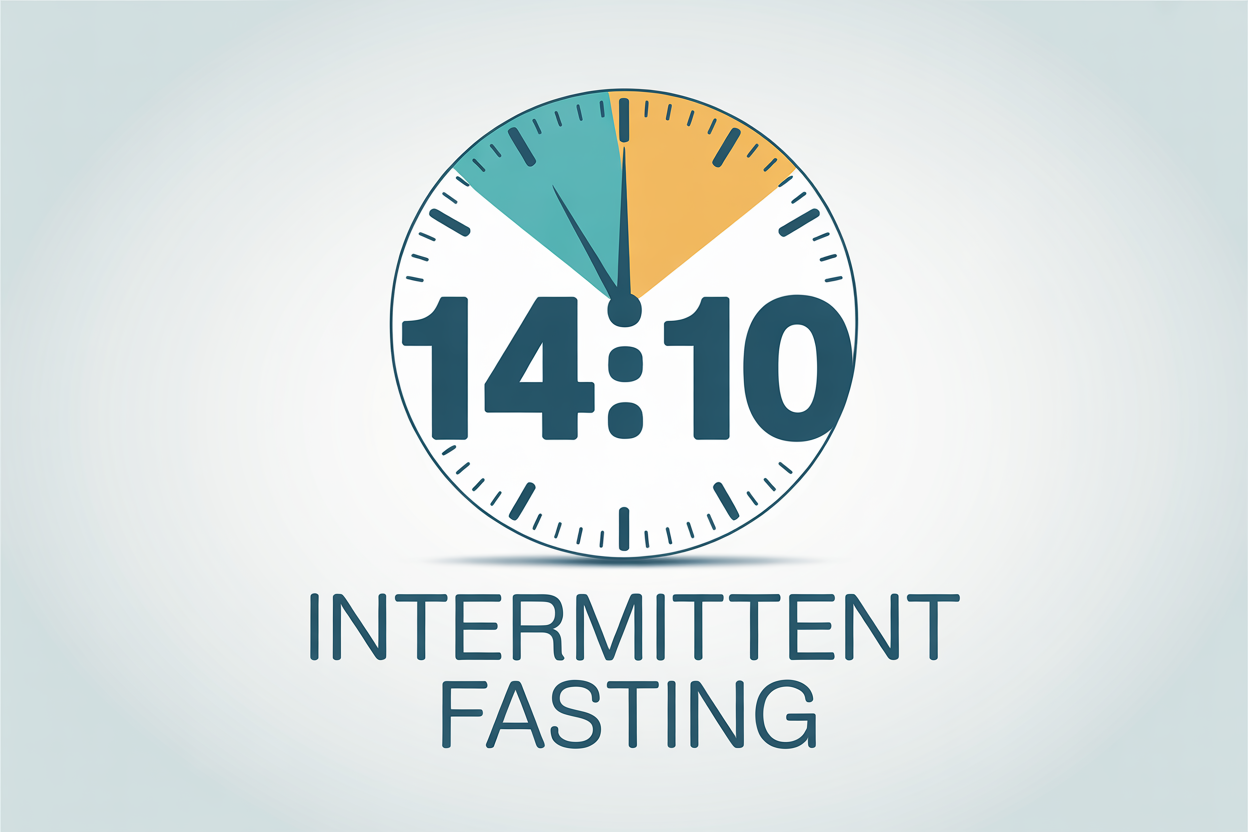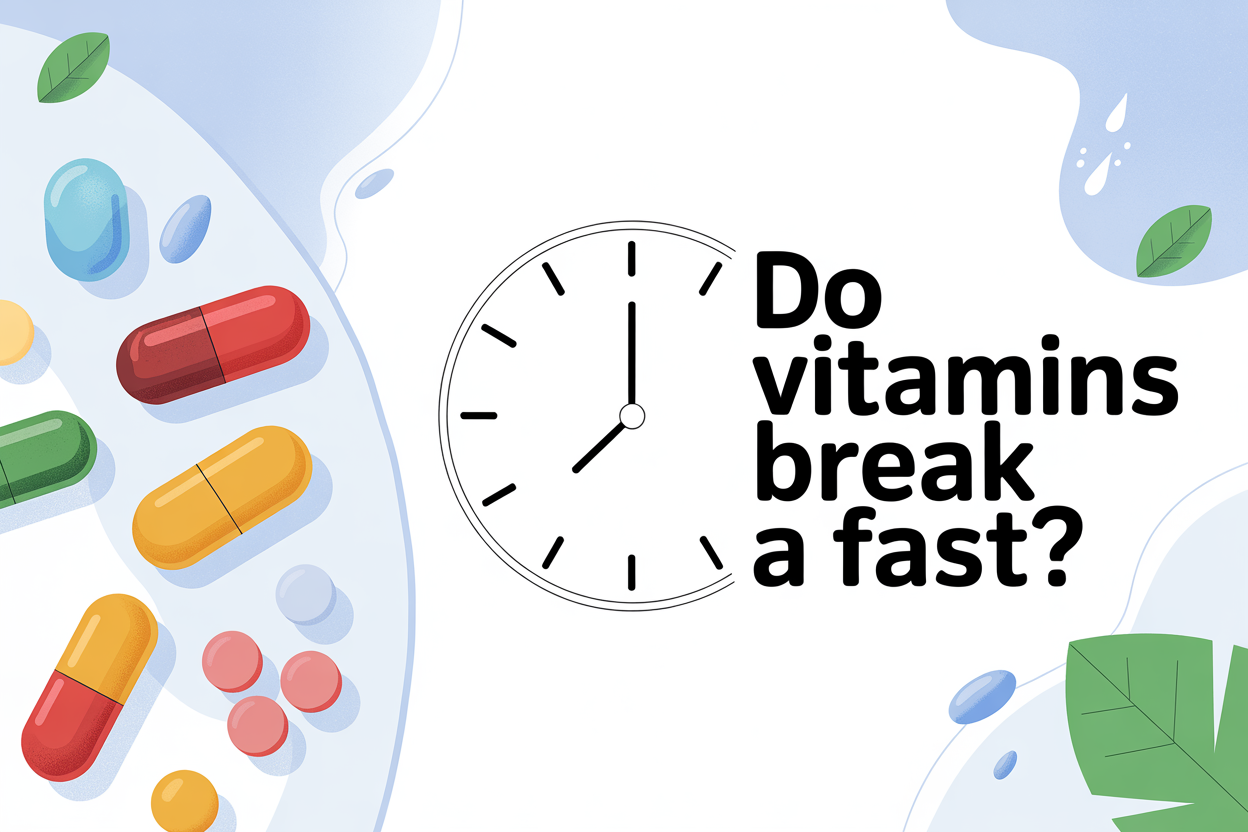Coffee tastes better sweet. But does stevia snap you out of a fasted state—or can it ride along without messing with your results? Let’s look at the research to see if you should be taking stevia during your fast, or if it might be better to avoid it to ensure a healthy, productive fasting experience.
What “Breaking a Fast” Really Means
Before we look at the impact of stevia, we have to understand what “breaking a fast” really means here. There are two main definitions. The strict rule says any calories count. If your goal is a pure fast—zero input, zero signals—then even a drop technically “breaks” it.
The goal-based rule looks at outcomes. You’re “broken” only if the benefits you care about—fat burning, insulin sensitivity, autophagy, or appetite control—are interrupted. A calorie-free drink can still send cues that nudge metabolism toward “fed” mode.
Sweet taste itself can spark what’s called the cephalic phase insulin response (CPIR): small, early hormonal pulses that prepare your body for incoming food. For most people, it’s modest. For some, it’s enough to shift hunger or cravings. It all depends on your body and how you react.
What Stevia Actually Is
Stevia comes from Stevia rebaudiana leaves. The sweet molecules—steviol glycosides like Rebaudioside A—are purified into concentrated powders or liquid drops. At realistic doses, they add almost no calories. And it also adds a dash of sweetness, where sugar would add some sweetness, and the calories you want to avoid during a fast.
Where things get tricky is “stevia blends.” Many supermarket packets mix stevia extract with fillers such as dextrose, maltodextrin, or sugar alcohols like erythritol. Those additives change the picture: dextrose and maltodextrin are real carbohydrates that can elicit measurable insulin and glucose responses even in small quantities.
If you’re aiming for a clean fast, the ingredient label matters more than the word stevia on the front.
Signals Beyond Calories: How Stevia Still Impacts Our Bodies
Even without calories, sweet taste can trigger brief insulin pulses, or the cephalic-phase response mentioned earlier. Studies show this happens inconsistently: some people release insulin when exposed to sweetness alone, others don’t. The variability explains why one person can sip stevia coffee all morning unfazed while another feels hungry within an hour. Every body is different.
Filler ingredients complicate things further. Carbohydrate bases like maltodextrin behave as quick sugars, producing clear insulin and glucose changes in lab settings. Even if the total calories are low, the metabolic signal isn’t zero.
What the Research Actually Shows
1. Stevia versus sugar or aspartame (acute effects).
A controlled crossover trial compared pre-meal drinks sweetened with stevia, sucrose, or aspartame. Participants consuming stevia showed lower post-meal glucose and insulin levels and didn’t compensate by eating more later. This supports the idea that pure stevia does not spike insulin the way sugar does.
2. Daily stevia intake in healthy adults.
A randomized trial following adults over several weeks found no significant changes in fasting glucose or insulin when stevia replaced sugar in drinks. In short, short-term stevia use looked metabolically neutral to those who participated in the study.
3. Cautionary data from other sweeteners.
Not all non-nutritive sweeteners behave alike. In one randomized controlled trial, healthy adults consuming sucralose daily for two weeks developed about an 18% reduction in insulin sensitivity. That study didn’t test stevia directly, but reminds us that individual and sweetener-specific responses differ.
4. Meta-level take.
Reviews pooling multiple human studies generally rate stevia as neutral to mildly beneficial for glycemic control, while acknowledging limited data and variability between formulations.
So, in other words, the impacts we can expect vary, but it’s not as harmful as other substances to our fasting. Still, if you want to fast effectively, let’s go over some ground rules.

Practical Rules for the Fasting Window
To make the most of your fast and to still enjoy a little bit of calorie-free sweetness, here are some tips to help guide your routine the healthy way:
- Use pure liquid stevia. Stick to brands listing only stevia extract and water or alcohol as ingredients. These pose the lowest risk of unintended signals.
- Avoid blends with maltodextrin or dextrose. If those appear early on the label, save that packet for the eating window. Those fillers count as carbs.
- Keep the dosage tiny. A couple of drops in coffee or tea is plenty. Constantly chasing sweetness—even from calorie-free sources—can reinforce hunger loops and minor CPIR effects.
- Know your goal. If you’re fasting mainly for weight control or habit adherence, stevia probably helps more than it hurts. If you’re fasting for autophagy or strict insulin optimization, skip all sweeteners and stay with black coffee, unsweetened tea, or water.
A Simple Two-Week Test to See How It Affects Your Body
If you want to see how stevia impacts your body, the best way to do so is to do a small experiment. You can use the Fasting App to run a little test to see how your body reacts to stevia in small doses.
The first week, just add 1–2 drops of pure stevia to your morning coffee. The second week, drink black coffee only and take note of the differences you feel.
Track hunger (1–10 scale), focus, energy, and time-to-first-meal. If stevia makes fasting easier with no extra cravings, it’s likely harmless for your goals. If you feel hungrier or notice early fatigue, keep your window clean.
So, Does Stevia Really Break a Fast?
From a calorie perspective, no—pure stevia adds effectively zero energy. From a goal-based perspective, it depends.
For adherence and appetite control, stevia can make fasting sustainable. For deep metabolic or cellular goals, the safest route is no sweetness at all. It can be hard, but ultimately, it might be the best thing for you if you want to achieve optimal results for your fasting.
The body’s responses to sweet taste aren’t binary, but nuanced. Understanding your goal—and testing your own reaction—matters more than universal rules.
Make Fasting Personal with the Fasting App by Municorn
Track when and how you use stevia, log hunger, cravings, and energy, and compare two-week cycles. Your own data will tell you if that drop of sweetness helps you stay consistent or quietly bends the rules. Download the Fasting App by Municorn today to optimize your fast.




